[Home Theater Network HDAV.com.cn] Although the sound quality and sound field effect of two-channel stereo is much better than mono, its limitations in home theater applications are also exposed. The two-channel stereo system can only reproduce the spatial sense of a two-dimensional plane, that is, the entire sound field is flat in front of us, and does not allow us to have a sense of presence in it. Of course, because at the concert, the audience was originally sitting on the stage, and the band players were on the stage. The simple sound field orientation that stereo can reproduce is basically consistent with the sense of position of the live concert. So it still meets the appreciation needs. However, when enjoying the film, the overall three-dimensional sense of the sound field can undoubtedly give the audience a lively, sense of presence in the audience. Therefore, multi-channel technology has also begun to develop.
Stereo 2.0
2.0 is also known as stereo. Stereo means a sound with a three-dimensional effect. The sound emitted by nature is stereo, but if we record these stereos after recording, amplifying, etc., all the sounds are released from a speaker. This kind of playback sound (compared to the original sound source) is not stereo. It is. At this time, since various sounds are emitted from the same speaker, the original sense of space (especially the spatial distribution of the sound group) also disappears. This replay is claimed to be mono. If the entire system is restored from recording to playback, the sense of space of the original sound can be restored to some extent (it is impossible to fully recover). Then, such a reproduced sound having a certain degree of spatial distribution characteristics such as azimuth layering is called stereo in the sound technology.
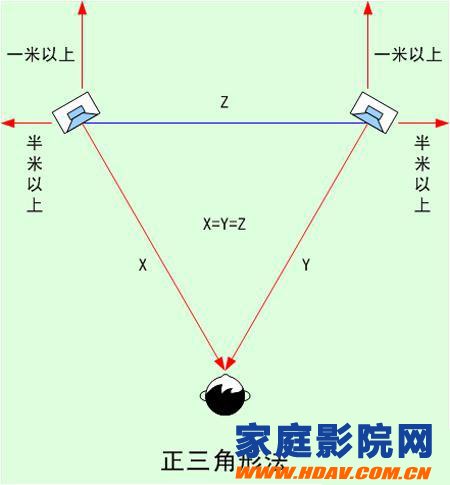
The CDs, MP3s, and APEs that we often listen to are all in the stereo category. He needs two speakers to play back all the information. And 2.1 is a variant of 2.0 playback - 2.1 the most difficult to handle bass in playback, played alone with a channel, the carrier of this channel is called the subwoofer.
Surround sound 5.1
In fact, multi-channel has also experienced the original era of 3.0, 4.0, 5.0, and 5.1. It is the AC3 and DTS encoding in DVD, which brought us into the 5.1-channel era. 5.1-channel recording is very complicated. The sound engineer needs to collect various materials, then mix them together in a manual manner and then record them into the 5.1-channel audio tracks. The main carriers of 5.1 are DVD movies and DVDs (DVD audio, mainly recording 5.1 LPCM-based).
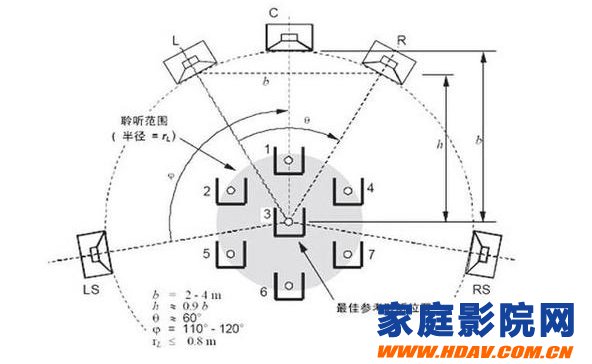
In general, in most movies, the center channel will play back 90 percent of the dialogue, while the shelf is responsible for the front sound field construction, surrounding the sound field construction responsible for both sides.
Many people like to say the name of the back ring in the 5.1 era, because they take it for granted that 5.1 is responsible for the surround of the sound field. But in reality, these two boxes are not placed behind, they are generally called surround or side surround in the amplifier settings. That's right, to be precise, they are side rings.
6.1 channels and early 7.1 channels
5.1 The biggest problem is that there is no physical speaker at the rear, and the human ear is particularly insensitive to the sound behind.

To solve this problem, Dolby introduced an upgraded version of Dolby digital EX based on Dolby digital 5.1, and DTS introduced the corresponding DTS ES, both of which are 6.1 encoding formats.

Dolby Digital EX is a rear surround added to Dolby 5.1. The increase we can think of is "post center", which completes the upgrade from Dolby 5.1 six channel to Dolby 6.1 seven channel. . With this rear center channel, we can appreciate the important transitions and hints between the left and right channels with the body and mind when we enjoy the big film, so that we can experience the real sense of the scene, and use a word to describe it as immersive. . At present, there are many films supporting Dolby Digital EX, such as "Floating", "Gladiator", "Star Wars Forward" and "Magic Ring Ring King".

DTS-ES is called "extended surround sound" and is divided into DTS-ES separation 6.1 and matrix 6.1. DTS-ES is an enhanced version of DTS 5.1 channel. When DTS-ES separates 6.1 decoding, the decoder considers the core part and the extended part of the DTS signal as a whole, and can use the arithmetic subtraction to recover the surround left/right channel, and the surround center (also known as the back surround center) is Directly decoded, thus producing a completely separate 6.1 sound field. The matrix 6.1 decodes only consider the core part of the signal, ignoring the extension, but still uses the DTS patented post-processing ES matrix module to still produce a 6.1 "extended surround" sound field. To put it simply, one is 6.1 in the original recording, and the other is 6.1 based on the algorithm.
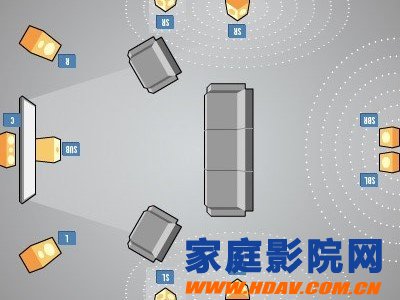
Before the Blu-ray machine did not come out, before the release of Dolby TrueHD and DTS HD, the 7.1 channel at that time was based on the original recording of 5.1 or 6.1, and then upgraded to 7.1-channel playback using the amplifier's algorithm. Therefore, the two rear surrounds at that time were generally close to each other in the position. That's because they are a channel.
Next generation 7.1 channel
The next generation is the coming era in Japanese. Because the home theater's power amplifier replacement is often the first to start with the four major Japanese power amplifiers - Tianlong, Marantz, Onkyo and Pioneer. Thus, during the upgrade of Blu-ray audio and video, the audio finally broke through the amount of data and the number of original recording channels, making the 7.1-channel DTS HD and Dolby tureHD the title of the next generation audio track. This is true in history, the original 7.1-channel home theater format is a real breakthrough. DTS also has the corresponding format DTS HD.
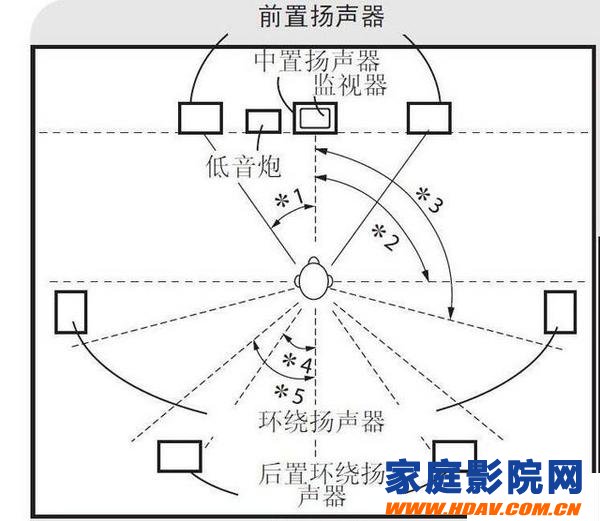
Next, let's take a look at the idea. The later rear channel is also called the rear center channel, which can be called by surround back. Later, there were also surround back L and surround back R simulated by computer, but they were basically the sounds extracted from the two sides. The surround back L and the surround back R based on Dolby tureHD and DTS HD are truly completely separated. So they are on the position and never want to be close to each other.
Immersive surround sound era, 7.1.4 or higher
When the channel continues to progress, there is a bottleneck - all previous recordings are based on the channel, and the sound engineer should consider when each channel will come out and then form a whole. If it is only 5.1, it is simpler. Making 7.1 is complicated, so even with the 7.1-channel format, there are still a lot of movies that only do 5.1. If you upgrade to another level, do 9.1 or 11.1? Let's not talk about the difficulty of production. The huge amount of data in the original track before the compression will drive people crazy. Thus, a new mixing technique has emerged, based on the object.


Based on the fact that the object is relative to the previous channel-based live, previously based on the channel, you have to do 5.1, to mix each channel, you have to mix 6 to 5.1 channels. If it is 7.1 then it will be mixed 8. Based on the object, I don't consider how many channels you use to play back. I just know what sounds will appear in the movie, and then set the coordinates and motion trajectory for these sounds.
Then, how many channels of home theater you use, the amplifier automatically calculates, and send these sounds to the corresponding channels and release them. Dolby ATMOS panoramic sound is the first format to operate this technology, and in order to make the sound more realistic and more inductive, Dolby ATMOS also joined the sky channel above the head.
Ok, if you still don't understand, I use the simplest metaphor for cooking. For example, if I want to make five dishes and one soup (5.1) today, then I have to prepare five dishes and soup ingredients separately, then use one pot to fry them one by one, and then put them separately.
Now, I got a very amazing machine that can help me make eleven dishes and one soup (7.1.4). And what I have to do is to prepare all the side dishes for these dishes and soups, and then throw them into the machine according to certain specifications. Next, the machine will automatically distribute the dishes into eleven dishes and one soup.
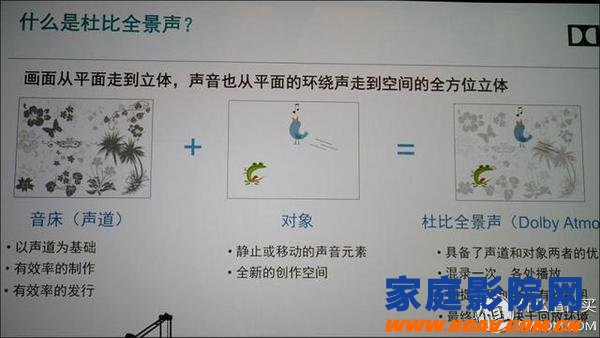
The magical machine is the Dolby panoramic sound. The sound bed and objects in the above are the raw materials for cooking.
As mentioned above, the five-in-one soup cooked in a pot is the traditional 5.1 and 7.1 track format based on the channel. The magic machine is a new format based on the object, like the current Dolby ATMOS and DTS X are such technology. And, the format of 7.1.4 is just just getting started. As the home theater amplifier progresses (the plate increases), he can distribute the sound to more channels. Below, we put Dolby panoramic sound, the most common kinds of pendulum maps.

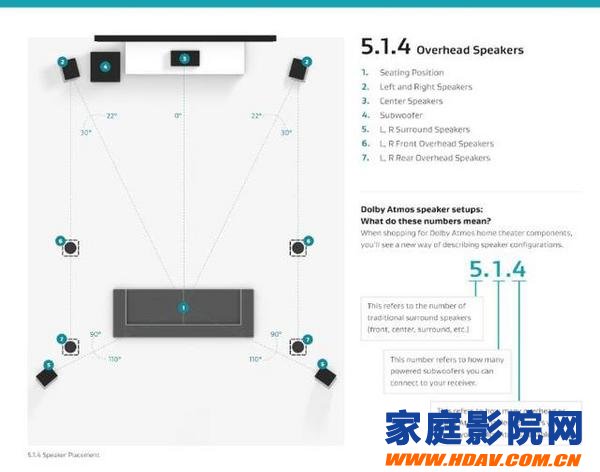

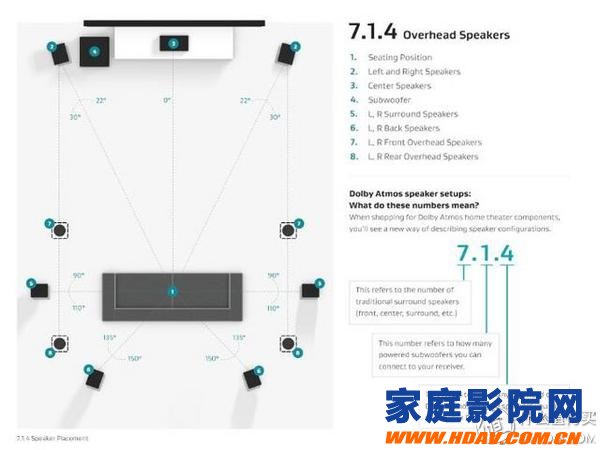
The highest Dolby panoramic sound home standard is 34 channels, as shown below.

Written at the end
I believe that reading today's article, whether it is 5.1, 7.1 or panoramic sound should be placed, everyone should understand. Here I only want to remind you that if you are a user leaning against a wall, don't pursue the rear surround of 7.1. If the speaker and the listening position are not far from each other, it is useless. More fresh and fun home theater information, please pay attention to home theater network http:// (WeChat: cnhifi), the country's most influential home theater audio player interactive media website.
Note: This article transferred from what is worth buying, author: Jun theater. The article is an independent view of the author and does not represent the position of the home theater network.
Our UL Certified Switches are mainly 3 Position Key Switch with 19mm Installation size. This series is a representative , competitive and hot product in our products catalog.
UL Certified Electric Key Switch, which indicates the Key Switches that have UL certification. The UL Safety Laboratory is the most authoritative in the United States and the largest private institution in the world for safety testing and identification.

Our company has UL certification testing equipment, so that UL certification series Key Lock Electrical Switches products meet international standard so could meet our customer`s needs. We are devote to supplying high-quality and excellent products to our customers with the Quality management testing, supplier management, feed inspection, in-process inspection, finished product inspection, measurement ,instrument management, final personnel training , high-class quality concepts.
We are always insisted on the quality of the Key Lock Switch, so our key switches with supreme quality could be investigated. If the client receive abnormal quality, the quality team meeting will be held actively to rigorously analyze the cause of the Abnormal product and make the correct solution. The same batch of materials should be separated in time to ensure that similar quality anomalies wont happen again, so we could achieve the goal that corrective and preventive measures are taken to make efficient solutions for the UL series of Key Switches used by customers.
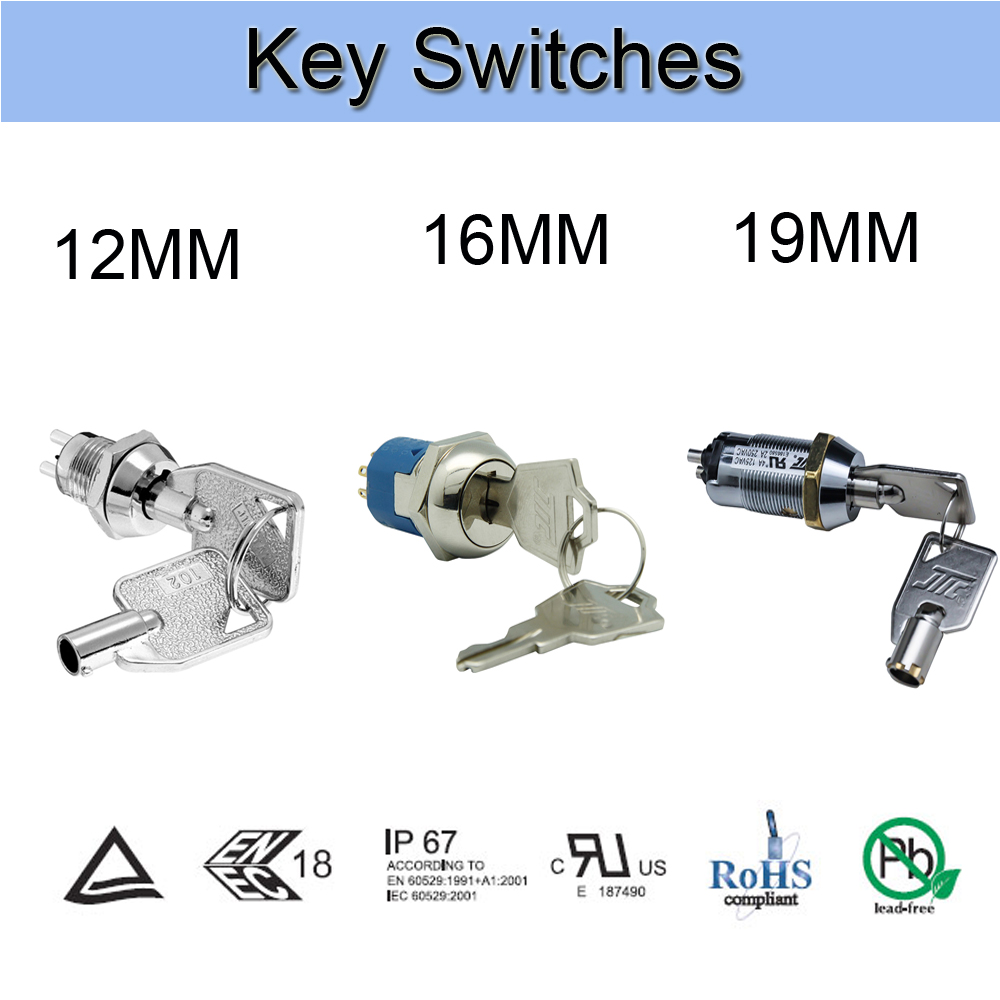
UL Certified Switches
Ul Certified Switches,Ul Certified 16Mm Switch ,Ul Certified Waterproof Switch,Ul Certified Electric Power Switch
YESWITCH ELECTRONICS CO., LTD. , https://www.yeswitches.com